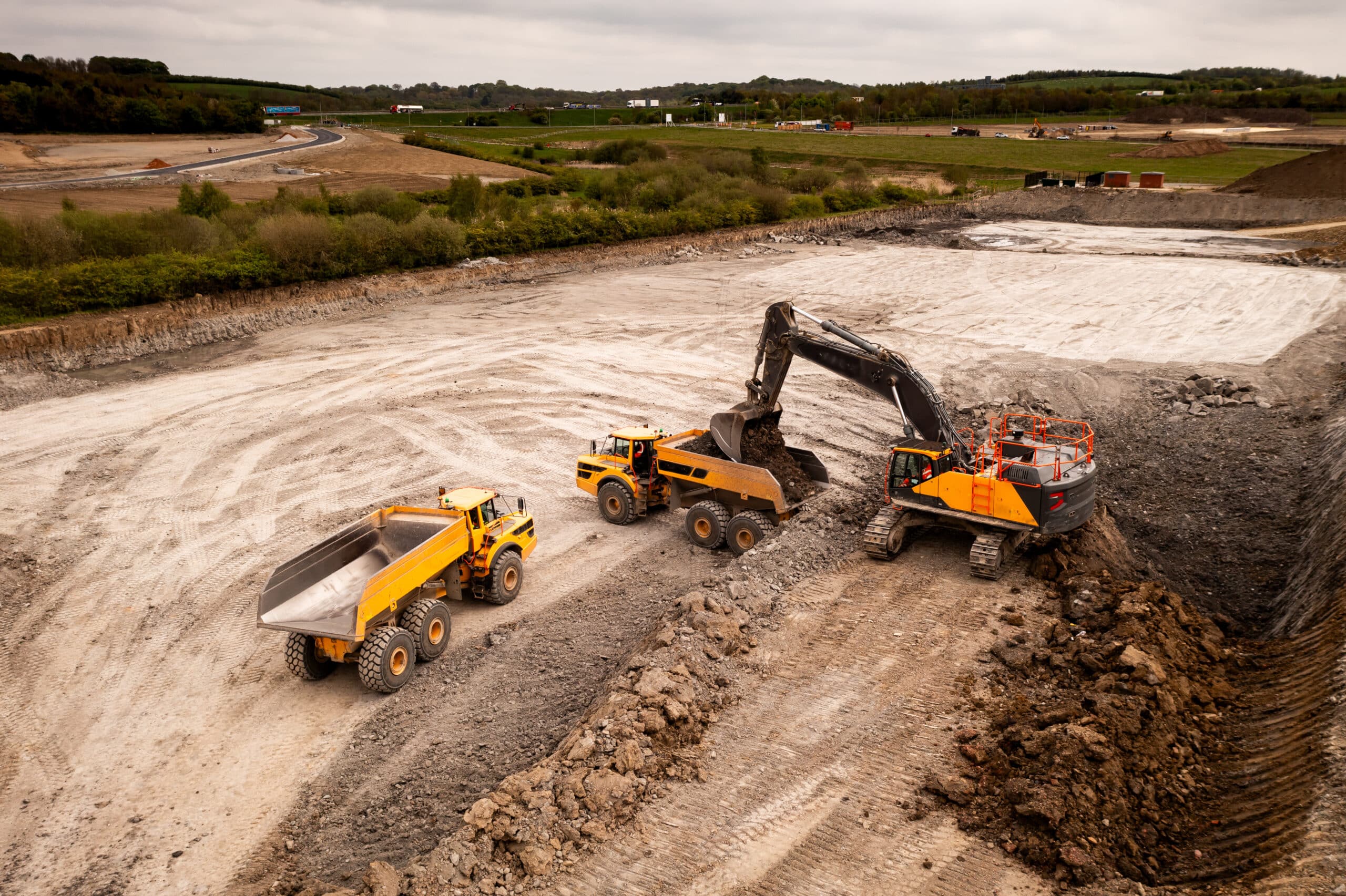This week at the Global Aginvesting conference in New York, global leaders in food, agriculture and institutional investing came together to discuss how they are navigating an increasingly complex landscape, marked by economic uncertainty, climate challenges, and technological disruption.
Farmland’s proven resilience against market volatility, the growth of natural capital markets, and new transformative technologies are causing institutional investors to redefine their outlook on farmland, viewing it not only as a store of value, but as a strategic asset class capable of delivering both financial returns and meaningful environmental impact.
The event made one thing clear: global aginvesting is evolving towards a more sustainable model that balances productivity with environmental restoration, while deriving new forms of economic value.
Below are 10 key takeaways from this year’s conference that look set to redefine returns, reshape industry practices, and rewrite the global aginvesting playbook in the years to come.
-
Farmland remains a resilient hedge against volatility
Even in today’s turbulent economic and political landscape, farmland continues to deliver strong, stable, long-term returns. From 2003-2023 farmland has provided an average annual return of 12.3%, with a relatively low volatility (risk) of 7.7%. In comparison, the S&P 500 stock market returned 9.7% annually, but with much higher volatility (17.1%). In short, farmland investment provides strong, steady returns with lower volatility compared to stocks, even prior to recent economic uncertainty.
Similarly, farmland assets do not move in lockstep with other common investments. There is a negative correlation between farmland investments, US real estate, and BBB-rated bonds, meaning farmland values do not closely track housing, commercial property, or bond prices. Yet, at the same time there is a positive correlation also exists between farmland prices and the CPI (Consumer Price Index), implying that the value of farmland rises with inflation.
While historically bonds have been a preferred option for investors seeking to mitigate against volatility, farmland investments have delivered stronger annual returns, with farmland averaging 7.8% compared to Treasury bond yields of 4.34%.
All of this makes farmland a good hedge against inflation and market volatility, providing a steady ballast for a diversified portfolio. Unsurprisingly, institutions have taken notice, with the value of their US farmland holdings more than doubling over the last five years.
-
Natural capital is providing tangible revenue streams
Biodiversity credits, carbon offsets, and water rights are no longer theoretical – they are generating real income and adding increasing value for agricultural assets. The recognition and monetisation of these ecosystem services, is fuelling the global voluntary carbon market which was valued at $1.7 billion in 2024 and is expected to grow at a CAGR of 25% from 2025 to 2034.
Average credit prices have nearly doubled since 2021, a trend that is set to continue as demand grows and stricter quality standards constrain supply. High-quality carbon units that offer additional benefits, such as biodiversity conservation, community development, or increased water security, currently command premiums of $30-$50 per tonne or higher, potentially rising to $100 per tonne by 2030. While lower-quality credits, particularly those associated with avoidance projects with questionable additionality claims, may experience declining prices stabilising at the $3–$10 per tonne range.
For aginvestors, this emerging market represents a significant opportunity to diversify revenue streams beyond traditional crop and livestock production. As regulatory frameworks mature and market mechanisms become more standardised, the monetisation of natural capital will accelerate, rewarding those who have positioned their portfolios to capitalise on this transformation.
-
Regenerative farming is climate-smart and margin-positive
Regenerative agriculture is not just good for the planet; practices such as cover cropping, reduced tillage, and diversifying crop rotations significantly improve soil health, sequester carbon, and notably reduce reliance on expensive agri inputs. In the US for example, studies have shown how regenerative corn production can generate net profits 70-80% higher than conventional methods, due to reduced fertiliser and pesticide costs.
Similarly, European studies have shown that regenerative practices can reduce input costs by 40% within the first year of adoption, and that farms implementing regenerative farming systems achieve a ~30% higher margin compared to conventional farming after six years.
To drive broader uptake, the agricultural sector requires clearly defined market signals, such as direct payments for soil carbon sequestration or premium pricing for biodiversity improvements.
Investors are now seeing regenerative practices as a way to make an environmental impact and outperform current norms. However, greater incentives are needed at farm level to drive adoption rates and shift from proof-of-scale to scale-up. Traditional risk management tools such as crop insurance or government subsidies may not be provide adequate financial protection to hedge against transitional risks, since upfront costs, temporary yield fluctuations, and operational adjustments are not covered by conventional safety nets.
-
The energy transition is reshaping land value
Renewable energy installations (solar panels, wind turbines, biogas digesters) on farmland are creating a new value dimension beyond traditional agricultural uses. Energy companies are willing to pay significant amounts to lease farmland for solar installations with some now offering $500-$4,500 per acre per year for 20-40 year leases. Most mid-western US farmers are being offered at least $1,000 per acre annually, which is ~5-10 times higher than what they would typically earn by renting that land to other farmers.
Similar financial benefits apply to wind turbines and biogas production facilities. Marginal land or less productive agricultural sites can become highly profitable through energy leases. These arrangements often provide reliable, annuity-type cashflows while landowners still benefit from any increase in the underlying asset. Consequently, properties suitable for both agriculture and energy production are becoming premium investment opportunities as investors prioritise dual-purpose land that can generate both agricultural yields and energy incomes.
-
Tech-Driven agriculture is unlocking higher returns
Agriculture is undergoing a rapid technological transformation that is dramatically increasing productivity, efficiency, and profitability. This creates new investment opportunities with significantly higher returns than traditional farming approaches. Innovations such as high-tech greenhouses and AI are redefining operational efficiency and data use in agriculture, creating scalable innovation and enhancing IRRs.
The global market for controlled-environment agriculture (CEA), including vertical farming and hydroponics, reached $51.9 billion in 2023 and is expected to grow steadily at a compound annual rate of 14% through 2032. Merging analytical AI with generative AI could unlock as much as $250 billion in EBITA across the ag-food value chain, with $100 billion coming from on-farm efficiencies (such as yield optimisation and input cost reductions) and another $150 billion from operational improvements across broader enterprise functions. For aginvestors, these advancements represent compelling investment opportunities, as tech-enabled agriculture drives higher yields and reduces labour costs, and ultimately generate stronger financial returns.
-
Water is an investable asset, and a risk
As climate volatility intensifies, water stewardship and access are emerging as central themes for agricultural investors. Water is no longer just a production input – it is now a tradable asset, a revenue generator, and a critical lens through which investors must assess long-term portfolio risks and returns.
Transparent market mechanisms such as California’s Nasdaq Veles Water Index (NQH2O) have allowed landowners and investors to monetize or hedge their water rights effectively. By mid-2024, the NQH2O futures market experienced price surges exceeding 120%, clearly highlighting both the value and volatility of water assets.
However, increased water scarcity is prompting stricter regulatory action. For example, California recently implemented a new policy placing the Tulare Lake sub-basin on “probation” under the Sustainable Groundwater Management Act (SGMA). This move imposed pumping fees, mandatory state oversight, and limitations on groundwater extraction. Such policy shifts are early indicators of the potential regulatory risks, and associated costs, that investors may face when managing water-intensive agricultural investments.
For forward-thinking agricultural investors, this changing landscape means that water management, rights acquisition, and regulatory awareness must be integrated deeply into investment decisions. Proactively managing these factors will be essential, not only for reducing risk, but also for unlocking additional value from water-rich and water-dependent agricultural assets.
-
Climate-smart assets are driving differentiated returns
Agricultural practices specifically designed to build resilience against climate change, such as agroforestry, habitat restoration, and climate-resilient crop varieties, are being positioned not just for risk mitigation, but as primary return drivers in next-generation portfolios.
Agroforestry systems, particularly alley-cropping (integrating rows of trees among crops), have demonstrated strong economic performance, with proponents reporting nominal internal rates of return (IRRs) around 12%, and net present values (NPVs) reaching approximately $750 per hectare, even before accounting for additional revenue streams from carbon credits or biodiversity payments.
Similarly, breakthroughs in crop genetics are creating substantial financial value. For instance innovations such as HB4 drought-tolerant wheat has shown impressive results, delivering yield increases above 10% under normal conditions and around 43% in drought conditions. Such innovations can significantly reduce the financial risks associated with climate variability and improve overall productivity and profitability.
For agricultural investors, embracing these climate-smart practices and technologies offers an attractive pathway to increase returns, and effectively manage climate-related risks. As these risks persist climate-smart portfolios aligned will be well-positioned for better long-term performance.
-
Europe’s natural capital is going mainstream
With policy support, biodiversity incentives, and a shrinking supply of arable land, European natural capital – particularly in the Iberian Peninsula – is attracting significant cross-border interest. Recent transactions underscore this trend: in 2024, Climate Asset Management invested approximately €80-€90 million to acquire 1,900 hectares of permanent-crop farmland across Spain and Portugal, joining other prominent institutional investors such as PSP Investments and Ontario Teachers’ Pension Plan (OTPP), who are increasingly active in the region.
Key to this trend are the Common Agricultural Policy’s eco-schemes, which now account for at least 25% of direct payment budgets and are intended to incentivise farmers to adopt climate and environment-friendly practices. For agricultural investors, this means that investing in European natural capital is supported by long-term policy commitments and biodiversity-related revenue streams.
Heightened investor interest is also being driven in part by scarcity. Between 2009 and 2022, the EU experienced a 3% reduction in total arable land due to urbanisation, climate impacts, and land degradation. As these pressures intensify, well-managed natural capital assets will likely appreciate further, making them even more attractive to investors looking for sustainable long-term returns.
-
Generative AI is set to transform the agricultural value chain
Generative AI looks set to transform the agricultural value chain, offering significant opportunities to improve profitability, efficiency, and product quality, while countering rising labour costs.
At the production stage, early adopters have already achieved reductions of 10-20% in input costs and decreased labour hours by 15-30%. Generative AI is also poised to reshape logistics and product formulation further downstream. Consumer-focused food segments such as retail, restaurants, and direct-to-consumer channels will benefit from AI-driven demand forecasting, inventory management, and hyper-targeted marketing strategies.
At the same time the personalised nutrition market is expected to grow at a CAGR of 15-24% through 2030, potentially unlocking new revenue streams for investors capable of identifying cross-selling opportunities, or leveraging valuable consumer data from third parties.
-
Long-term value will be built on a foundation of alignment and stewardship
The future of aginvesting lies in collaborative stewardship, greater manager-investor alignment, and transparent data sharing. Value creation will hinge on congruent sustainability goals, measurement standards, and management strategies.
The rapid growth in adoption of frameworks such as the Taskforce on Nature-related Financial Disclosures (TNFD) is a significant step in the right direction. As part of this initiative, over 500 organisations, including 129 major financial institutions, managing a combined $17.7 trillion in assets have committed to disclose their impacts on nature and biodiversity.
Managers who proactively share data such as soil carbon baselines, water risk assessments, and biodiversity impact metrics with investors are already seeing tangible benefits, as transparency translates into franchise value. By demonstrating measurable sustainability performance, these managers can differentiate from competitors, justify higher management fees, and are more likely to secure or renew mandates from investors.
At Farrelly Mitchell, our agricultural investment advisory services include due diligence, feasibility and financial modelling, risk analysis, value creation, operations improvement, and technology integration. Our global aginvesting experts can dissect and examine investment opportunities, helping our clients identify high-potential assets, mitigate risks and maximise returns on investments. To discover how we can enhance your investment practices and performances, contact us today.














